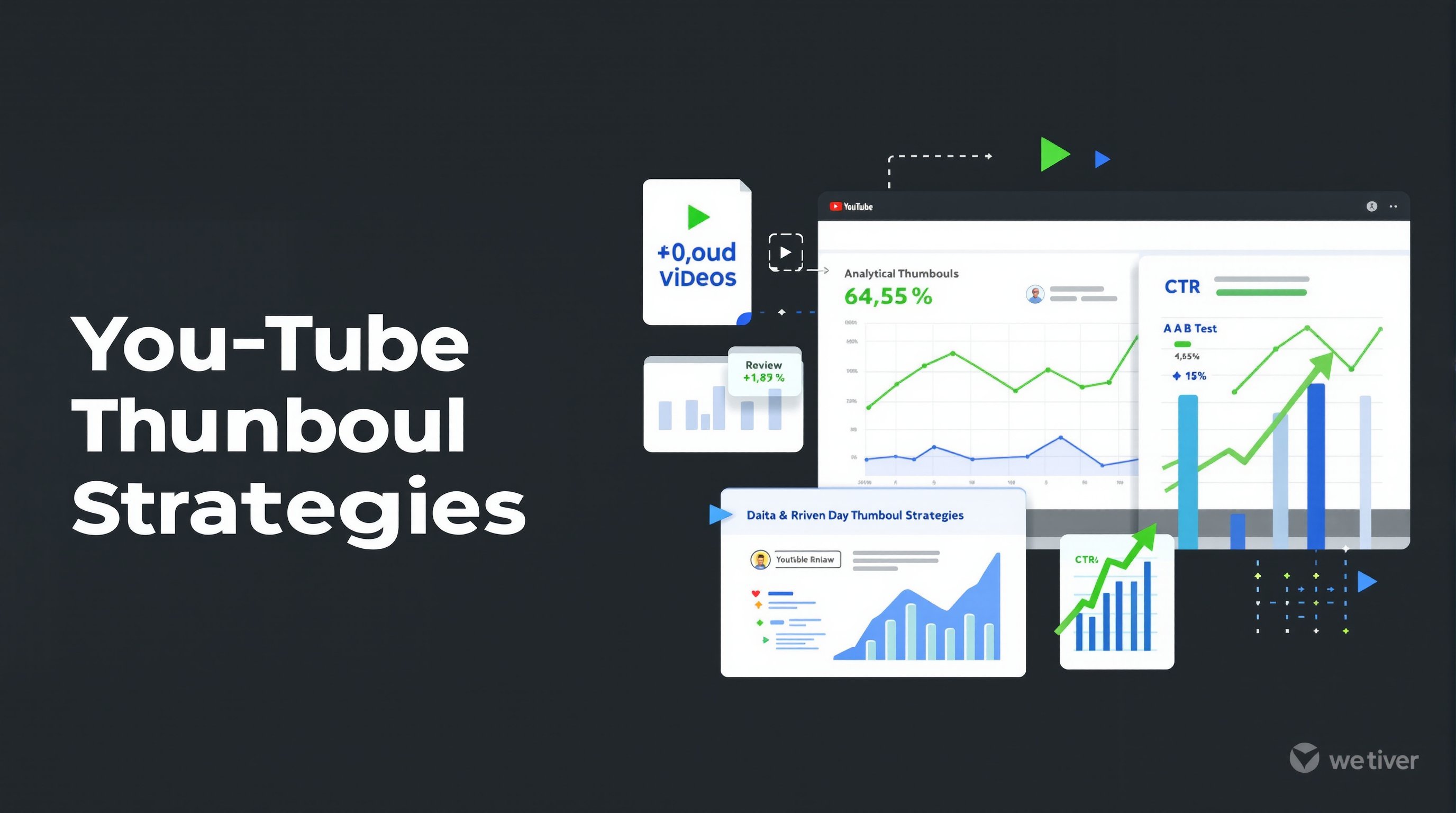A/B Testing Mastery: Scientific Optimization Methods
Master the art and science of split testing thumbnails to maximize click-through rates. Learn the exact methodologies used by top creators to systematically improve their performance.

A/B testing isn't optional—it's mandatory for serious YouTube creators. While everyone talks about the importance of great thumbnails, few creators actually test them scientifically. That's a massive missed opportunity, because the difference between an average thumbnail and an optimized one can mean 10x more views.
"A/B testing thumbnails increased my average CTR from 4.2% to 12.8% in just 3 months. It's the single most impactful change I've made to my channel."
- Emma Wilson, 1.2M subscriber lifestyle channel
The Science of Split Testing
A/B testing for thumbnails isn't just about creating two versions and seeing which gets more clicks. It's about applying rigorous scientific methodology to achieve statistically significant results:
❌ Bad A/B Testing
- • Testing too many variables at once
- • Not enough sample size
- • Stopping tests too early
- • Ignoring statistical significance
- • No hypothesis formation
✅ Scientific A/B Testing
- • Single variable isolation
- • Proper sample size calculation
- • Statistical significance testing
- • Confidence interval analysis
- • Hypothesis-driven experiments
The Complete A/B Testing Framework
The SPLIT Method:
Strategize
Form a clear hypothesis about what element will improve CTR
Plan
Design experiments with proper controls and statistical power
Launch
Execute tests with randomized traffic distribution
Interpret
Analyze results using statistical significance tests
Take Action
Implement winners and iterate with new hypotheses
Step 1: Hypothesis Formation
Every test should start with a specific, measurable hypothesis. Instead of "Let's see if a red background works better," try:
"I hypothesize that using a high-contrast red background instead of blue will increase CTR by at least 15% because red creates urgency and stands out better in the YouTube feed, particularly on mobile devices."
Step 2: Variable Isolation
Only test ONE element at a time. Common variables to test include:
- Colors: Background colors, accent colors, text colors
- Text: Font size, placement, wording, style
- Faces: Expressions, angles, number of people
- Composition: Element placement, spacing, focal points
- Style: Realistic vs. illustrated, minimalist vs. busy
Statistical Significance: The Numbers That Matter
Understanding the math behind A/B testing prevents costly mistakes:
Standard threshold for statistical significance in marketing tests
Impressions per variant for reliable results in most cases
Minimum test duration to account for day-of-week variations
Advanced Testing Strategies
Sequential Testing
Instead of testing random elements, build on your wins systematically:
- Foundation Test: Establish your baseline with current best thumbnail
- Color Test: Find the optimal color scheme
- Typography Test: Optimize text elements using winning colors
- Composition Test: Refine layout using winning colors and text
- Advanced Test: Test subtle refinements and psychological triggers
Multivariate Testing
For channels with high traffic (50K+ views per video), you can test multiple elements simultaneously:
Warning: Multivariate testing requires exponentially larger sample sizes. Most creators should stick to simple A/B tests.
Segment-Based Testing
Test different thumbnails for different audience segments:
- Geographic: Different cultures respond to different visual cues
- Device type: Mobile vs. desktop users see thumbnails differently
- Time-based: Different thumbnails for different times of day
- Subscriber status: New viewers vs. returning subscribers
Case Study: 340% CTR Improvement
A tech channel tested 15 different thumbnail variations over 6 months:
- • Original CTR: 2.1%
- • After color optimization: 4.3% (+105%)
- • After text refinement: 6.8% (+58%)
- • After composition changes: 9.2% (+35%)
- • Final optimized version: 9.2% (340% total improvement)
Common A/B Testing Mistakes to Avoid
Mistake #1: Testing Too Many Variables
Testing background color AND text size AND facial expression simultaneously makes it impossible to know which change drove results.
Mistake #2: Stopping Tests Early
Seeing early positive results and declaring victory before statistical significance is reached leads to false positives.
Mistake #3: Ignoring External Factors
Running tests during holidays, trending events, or algorithm changes can skew results dramatically.
Ready to Start Scientific Testing?
A/B testing isn't just about finding what works—it's about building a systematic approach to continuous improvement. Every test teaches you something about your audience, and every win compounds into bigger gains.
Launch Your A/B Testing Lab
Start running scientific thumbnail tests with our advanced A/B testing framework
Related Articles
Advanced Analytics: The Secret Weapon for YouTube Success
Learn how to use analytics to inform your A/B testing hypotheses and strategy.
AI Thumbnail Generation: Creating Winners in Seconds
Discover how to generate multiple A/B test variations quickly with AI tools.